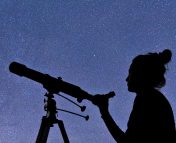Astrobites is trying something new: On occasional Fridays, posts will not strictly be summaries of astronomy and astrophysics papers. Instead, posts will range from personal stories to career navigation to posts about equity and inclusion (you may have noticed a post a few Fridays ago about the impact of the physics GRE in graduate admissions). Today’s post discusses ways (both small and large) that you can increase equity and inclusion in your department or workplace. Ideas in this post are things Astrobite authors have implemented at their institutions and feel were useful.
First, though, I’m going to note why I have chosen to use the phrase “equity and inclusion” instead of the somewhat-more common “diversity”. We have data that shows that basically every minoritized* group is underrepresented in the fields of physics and astronomy. However, it is not enough to simply increase diversity by increasing the numbers of scientists belonging to those underrepresented groups. This means nothing unless those groups are treated justly and fairly (“equity”) and feel welcomed and valued (“inclusion”). It is also worth noting that throughout history, diversity initiatives most frequently focus on retaining white women, often neglecting intersectionality in STEM. This special issue by Nature News, for example, fails to bring this issue into the conversation.
It’s also important to note that working towards a more inclusive society is a process, and requires educating yourself. There is an entire field of research dedicated to inclusivity in STEM. You won’t learn everything overnight. If you’re looking for a place to start, learning about implicit biases that we (as a society) all have is a good place. You can even take an online test to learn about your own implicit biases! If you are looking for academic papers to read, the Physics Education section of Arxiv occasionally has papers (one such paper by Dounas-Frazer et. al is called “Learning to Do Diversity Work“). Additionally, Physical Review Physics Education Research recently published a huge open-access collection of papers on Gender in Physics.
Let’s move on to the roundup (in no particular order) of actions past and present Astrobiters have taken to increase equity and inclusion in their departments, and could be adapted to any workplace:
- If you are a teaching assistant or instructing a class, take small steps that make your classroom more comfortable for everyone. For example, find out what each student’s preferred name is. There are many reasons a student may not go by the name you have on your roster. Many schools now has a “preferred name” field in their database system, but if yours doesn’t consider emailing each student to ask how they would like to be addressed.
- If you are teaching a laboratory section and divide the students into groups, be mindful of gender dynamics within the groups. Research by Nilanjana Dasgupta shows that women are more confident in their abilities if they are not the only women in their group.
- Attend conferences such as the Conference for Undergraduate Women in Physics or Inclusive Astronomy. Take the ideas you learn there back to your university. (Note: The deadline for applying for the Conference for Undergraduate Women in Physics next Friday!)
- Mentor students at your university. One Astrobiter has formalized a mentoring program at their institution that pairs up undergraduate women in physics with graduate students and postdocs who can answer questions about everything from their identity as a women in STEM to which classes to take. However, not all mentoring relationships must be formal.
- Tailor your public outreach work towards equity-minded programs. One Astrobiter volunteers their time doing lab demonstrations for a program that provides a taste of university-style teaching to potential university applicants from underserved populations to help ease their transition into higher education. Another has volunteered with Upward Bound, inviting students into the lab to give them experience doing experimental astrophysics. And yet another Astrobiter provides support services to a program that provides older and non-traditional students an opportunity to earn a physics degree.
- Become active in your school’s inclusivity-in-STEM groups. Start one if none exists. APS can provide grants of up to $1,000 to either start a new women in physics group or expand an existing group. If you’re in the UK, many schools have an Athena Swan Committee, which is a British award program that institutes who are tackling gender inequality can earn. National US-based groups that may have chapters or affiliations with your school include oSTEM (for LGBT+ and allied students), SACNAS (Society for Advancement of Chicanos/Hispanics and Native Americans in Science), the National Society of Black Physicists, and the National Society of Hispanic Physicists. Many of these groups host a yearly conference as well.
- Additionally, many departments or colleges have a diversity-focused committee. This can be a way to directly impact policy at your institution, such as eliminating GRE requirements. One Astrobiter is the student representative for their department’s committee.
* I am using the word “minoritized” here for reasons outlined by Sarah Tuttle in this blog post.


